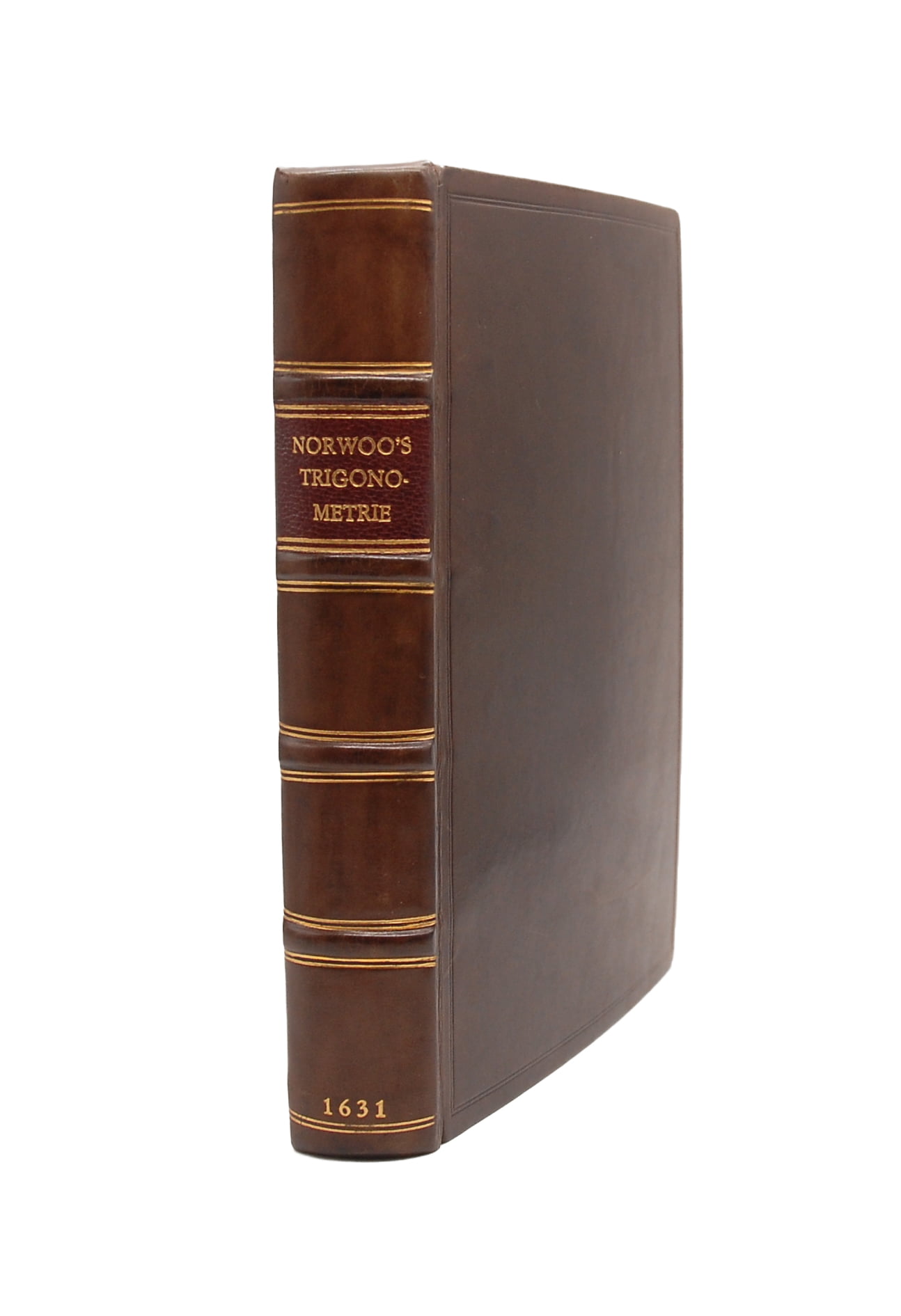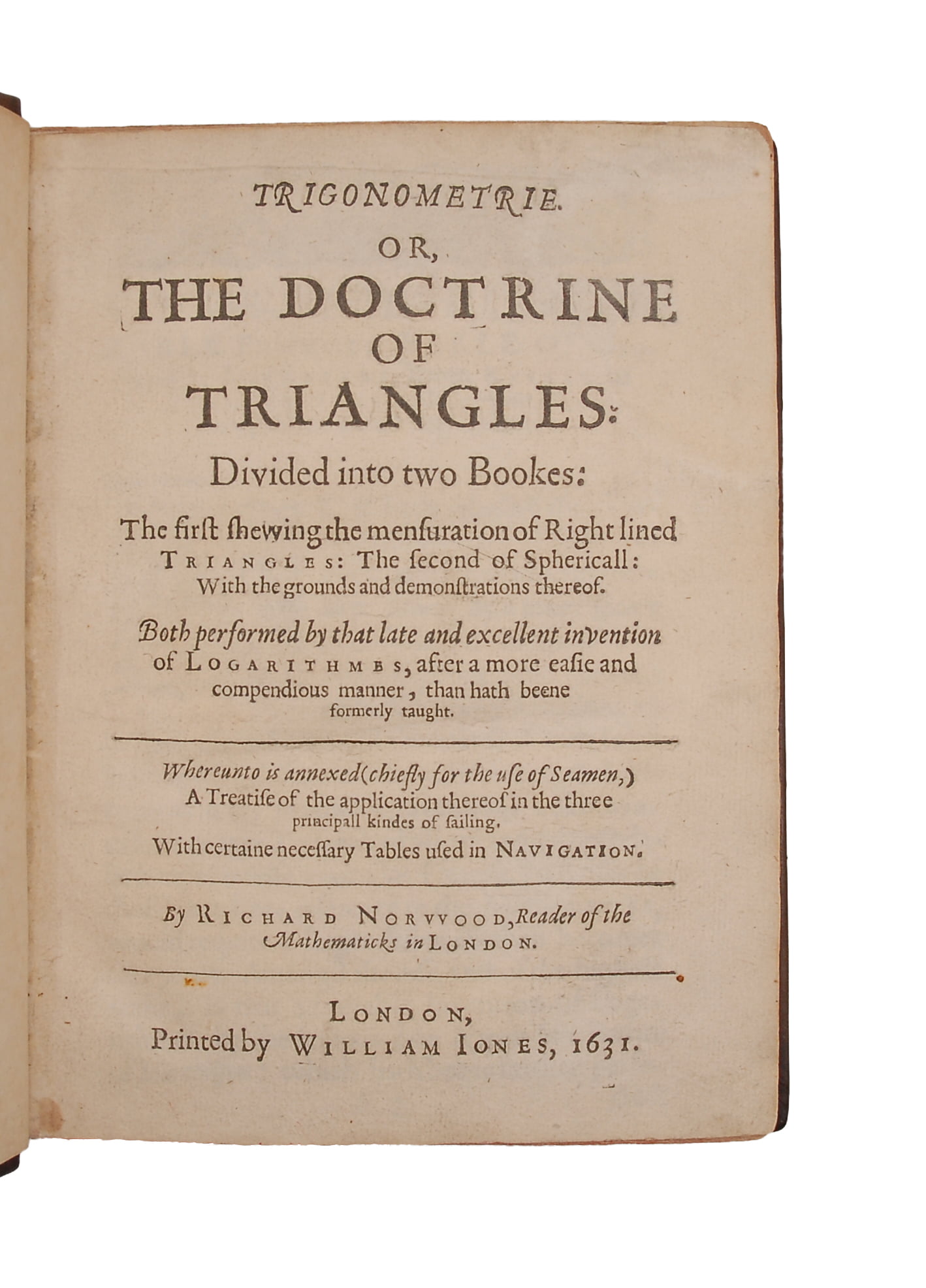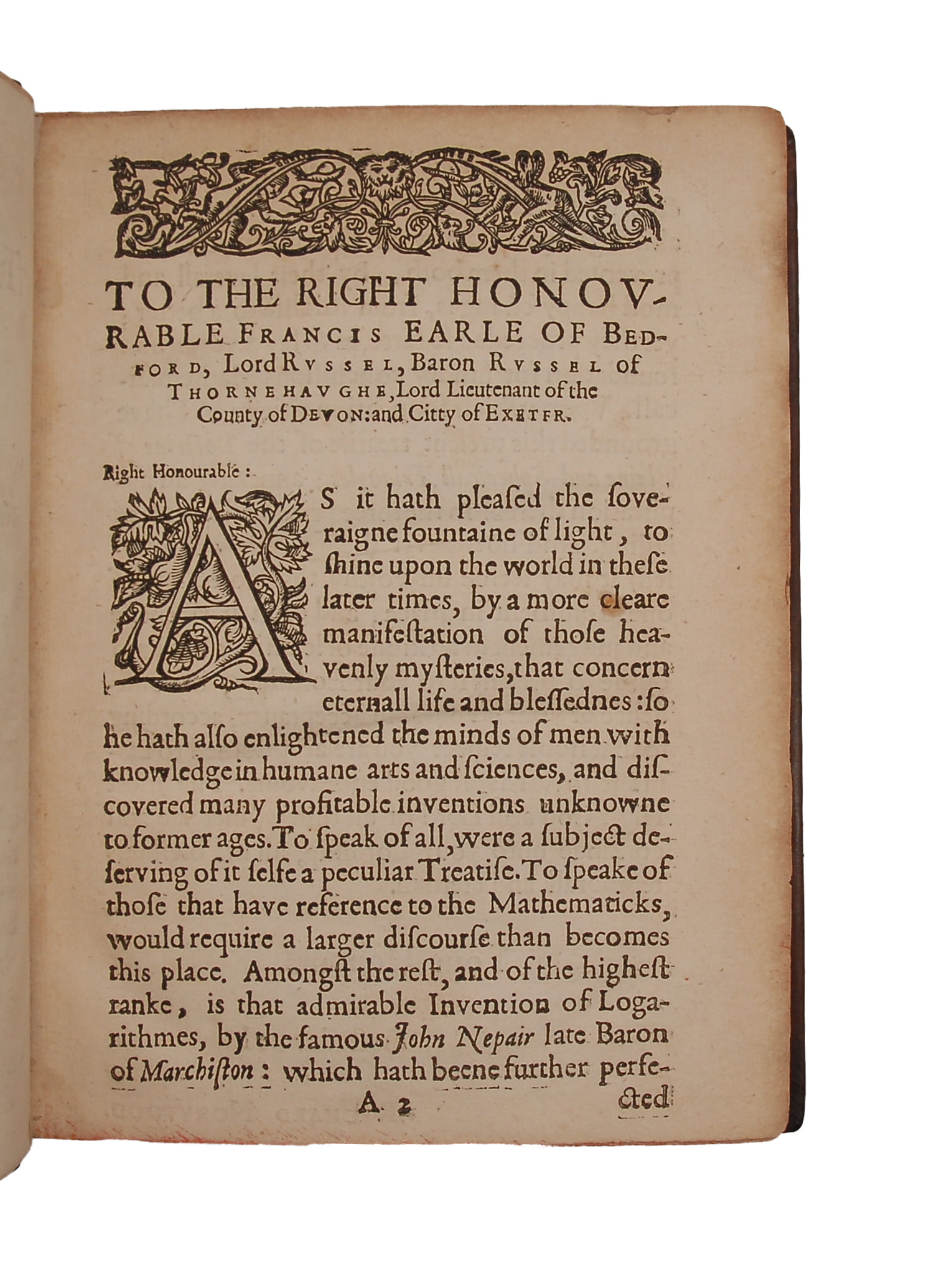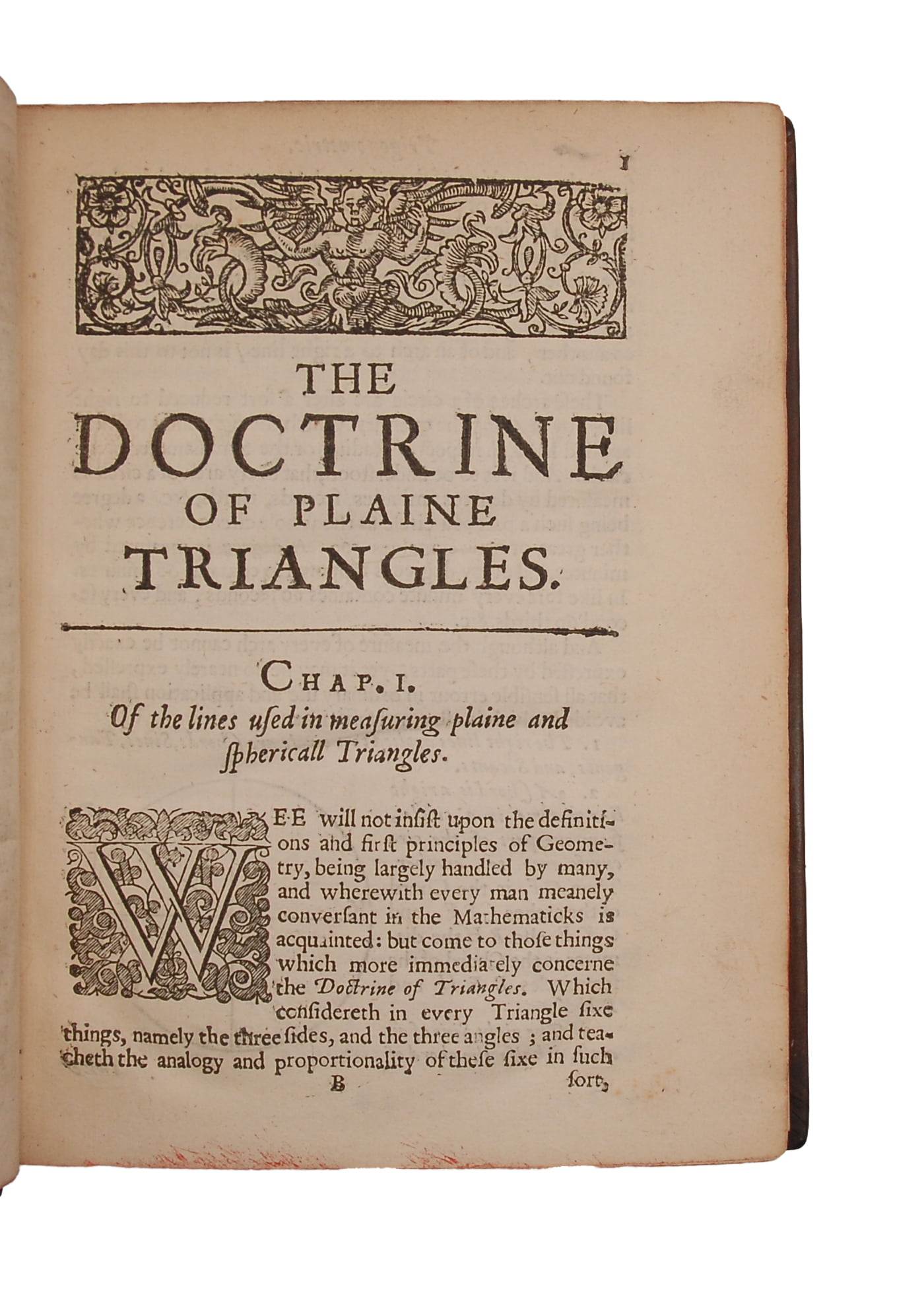NORWOOD, Richard
CHARTS AND NAVIGATION
NORWOOD, Richard Trigonometrie. or, the doctrine of triangles:… Whereunto is annexed (chiefly for the use of seamen,) a treatise of the application therof in the three principall kindes of sailing
London, William Jones, 1631£5,950.00
FIRST EDITION. 4to. pp. [viii], 39, [i], 128, [188]. A-H (+-H3), I-Z , & , “[*]”² chi² 2A-2I a-l m². Variant issue with “[*]1v contains errata; [*]2 is blank; chi1 is divisional title to “Ten chiliades”; chi2 contains errata.” ESTC. Roman and Italic letter. Floriated woodcut initials, grotesque head and tail-pieces, typographical ornaments, many woodcut mathematical figures in text, tables of logarithms, label of Harrison D. Horblit on pastedown, Erwin Tomash’s below. Light age yellowing, very rare and minor marginal mark. A very good copy, crisp and clean, in modern dark calf, spine with raised bands, double gilt ruled in compartments, red morocco label gilt, a.e.g.
Rare and important first edition of this influential work on trigonometry and mathematics especially for the purpose of navigation. “Norwood’s family were gentlefolk who apparently had fallen upon hard times; he attended grammar school, but at the age of fifteen was apprenticed to a London fishmonger. The many seamen he met in London aroused his interest in learning navigation and seeing the world. Eventually he was able to switch his apprenticeship to a coaster plying between London and Newcastle. He tells in his Journal how, while forced to lay over for three weeks at Yarmouth, he went through Robert Record’s treatise on arithmetic, The Ground of Arts. So involved was he in studying mathematics that he almost forgot to eat and caught “a spice of the scurvy.” During the following years Norwood made several voyages to the Mediterranean and on his first trip was fortunate to find a fellow passenger with an extensive mathematical library, among which was Leonard Digges’s Pantometria. On following trips Norwood himself took along mathematical books, including Euclid’s Elements and Clavius’ Algebra. To retrieve a piece of ordnance that had fallen into the harbor at Lymington, Norwood devised a kind of diving bell, descended in it to the bottom, and was able to attach a rope to the lost piece. This exploit brought him to the attention of the Bermuda Adventurers, a company that planned to finance its colonization of Bermuda by exploiting the oyster beds that supposedly surrounded the islands. In 1616 Norwood joined them and sailed for Bermuda. It soon became evident that very few pearls were to he found, and Norwood was then offered the task of surveying the islands. He made several surveys between 1614 and 1617, and upon their completion he returned to London. .. Upon his return to London, Norwood taught mathematics and wrote a number of books on mathematics and navigation, which went through many editions. His Trigonometrie, or, The Doctrine of Triangles (1631), based on the logarithms of Napier and Briggs as well as on works by Wright and Gunter, was intended essentially as a navigational aid to seamen. In it Norwood explained the common logarithms, the trigonometrical functions, the spherical triangles, and their applications to the problems confronting the navigator. He posed practical problems of increasing complexity; his explanations were clear; and he enabled the navigator to determine his course with the aid of a plane or Mercator chart and the logarithmic and trigonometric formulas. He emphasized great circle navigation by giving the formulas involved and thus facilitated the, calculations. … Norwood was the first to use consistently the trigonometric abbreviations s for sine, t for tangent, sc for sine complement, tc for tangent complement, and sec for secant.” DSB.
This work is a mariner’s guide. It is the first that provided practical help in all types of trigonometry and navigation. It is divided into three books. The first deals with plane trigonometry, the second with spherical trigonometry and the third with navigation. In the spherical trigonometry section, he takes two basic formula devised by Napier and uses these as the basis for all his calculations. Waters (The Art of Navigation) describes this section as quite the ablest and most complete treatise on its subject yet published for the general public. The final section on navigation deals with plane charts, Mercator’s charts (at a time when the first Mercator’s chart of the Atlantic had only recently been printed), and sailing on a great circle route—something Norwood had made a special study. The problems used to illustrate this last book begin with elementary situations and advance to complex ones involving things like a military vessel attempting to plot a course to intercept a pirate ship from information given by a third ship that had lost its compass. The last half of the volume consists of tables of logarithms of natural numbers and trigonometric functions.
ESTC, S113369. STC 18692. Tay MP, I, #149; Hend BTM, 27.0In stock








